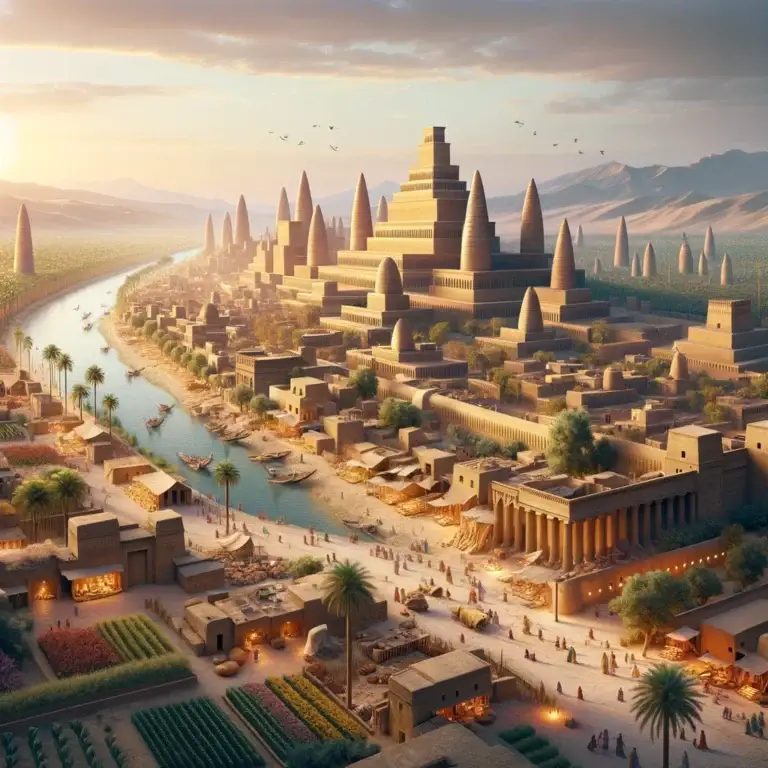Ancient Mesopotamia

Table of Contents
Ancient Mesopotamia Overview
Ancient Mesopotamia, roughly from 3500 BCE to 500 BCE, was a cradle of civilization between the Tigris and Euphrates rivers in present-day Iraq and parts of Syria. Known as the “land between the rivers,” Mesopotamia saw the rise of several influential city-states, including Sumer, Akkad, Babylon, and Assyria.
Key innovations such as writing (cuneiform script), the wheel, and irrigation systems emerged in this region. Famous for its ziggurats, like the one at Ur, and the Code of Hammurabi, Mesopotamia boasted a rich cultural heritage encompassing religion, literature, and art. The area’s strategic location facilitated trade and cultural exchange, influencing neighboring civilizations and shaping the foundations of Western civilization.
Ancient Mesopotamia History
Ancient Mesopotamia, located in the region known as the Fertile Crescent between the Tigris and Euphrates rivers, is often regarded as one of the cradles of civilization, dating back to around 3500 BCE.
Sumerians were among the earliest inhabitants of Mesopotamia and established the world’s first known civilization in the region, with cities like Uruk, Ur, and Eridu. They developed the earliest known form of writing, cuneiform, around 3200 BCE.
The Akkadian Empire, founded by Sargon the Great around 2334 BCE, was one of the first empires in history and united several city-states under a centralized government. Akkadian became the lingua franca of Mesopotamia during this period.
Hammurabi, the sixth king of the First Babylonian Dynasty, ruled from 1792 to 1750 BCE. He is best known for his law code, the Code of Hammurabi, one of the earliest known legal systems, which established rules and punishments for various offenses.
Mesopotamian religion was polytheistic, with gods and goddesses representing natural forces and aspects of life. Among the most prominent deities were Anu, Enlil, Inanna, and Marduk.
The Assyrian Empire, centered in northern Mesopotamia, rose to prominence in the 9th century BCE and became known for its military prowess and brutal conquests. The Assyrians developed advanced military tactics and siege warfare techniques.
The Hanging Gardens of Babylon, one of the Seven Wonders of the Ancient World, were reportedly built by King Nebuchadnezzar II in the 6th century BCE in the city of Babylon. Despite their fame, the gardens’ existence and exact location remain debated among historians.
Mesopotamian society was hierarchical, with kings and nobles at the top, followed by priests, scribes, artisans, and peasants. Slavery was also common in ancient Mesopotamia.
Mesopotamians made significant contributions to mathematics, astronomy, and literature. They developed a sophisticated system of mathematics based on the sexagesimal (base 60) numeral system. They made important astronomical observations, such as the division of the day into hours, minutes, and seconds.
The decline of ancient Mesopotamian civilizations began around the 6th century BCE with the conquest of the region by the Persian Empire under Cyrus the Great. Later conquests by Alexander the Great and subsequent empires further shaped the region’s history.
Related Links
Ancient Greece
Italian Renaissance
The Middle Ages
Congress of Vienna